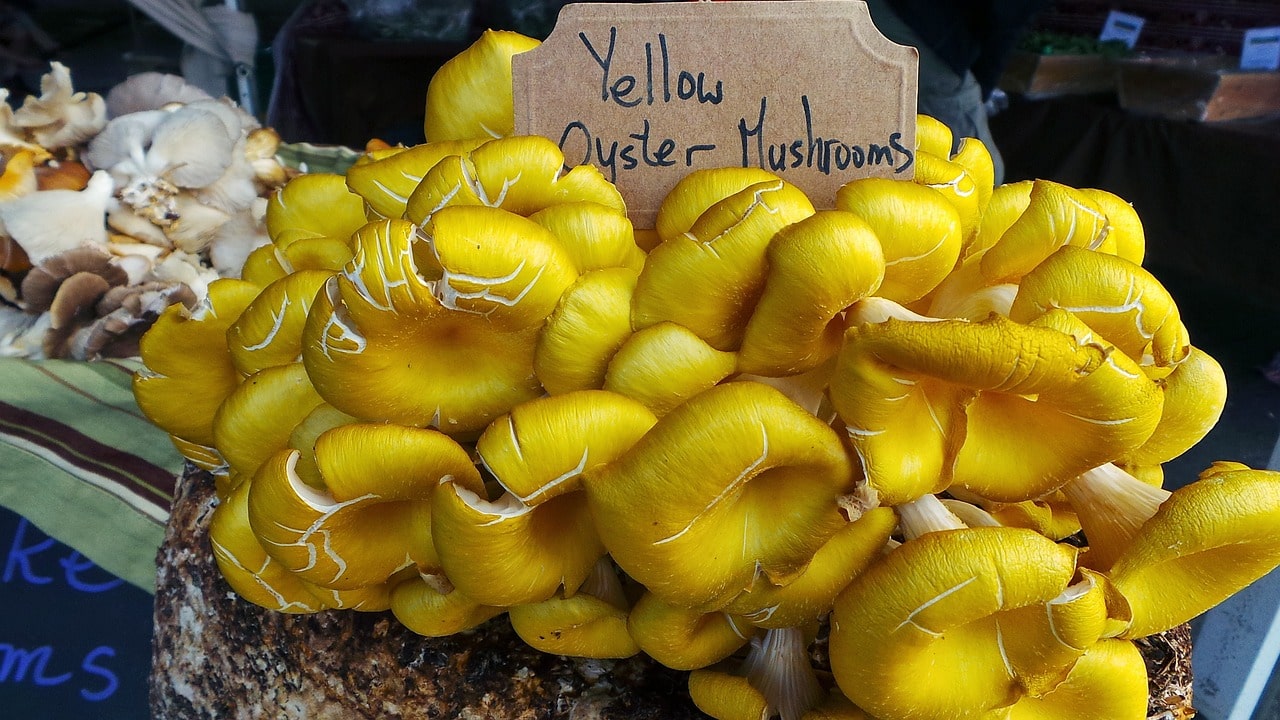A lush, green lawn is the pride of any homeowner, but achieving that perfect patch of grass often requires more than just regular watering and mowing.
The secret to a vibrant lawn might just be found in an unexpected place: mushroom compost. This natural, nutrient-rich material, often overlooked by gardeners, can transform your lawn’s health and appearance.
Mushroom compost for Nutrient-rich lawn
Mushroom compost is an organic material produced as a byproduct of mushroom farming. It’s created from a mix of natural ingredients such as:
- Straw
- Hay corn cobs
- poultry manure
- gypsum
These are composted and then used as a growing medium for mushrooms. Once the mushrooms have been harvested, what’s left behind is a rich, nutrient-dense compost that is ideal for gardening and lawn care.
This compost is packed with essential nutrients like nitrogen, phosphorus, and potassium, vital for healthy plant growth. Unlike synthetic fertilisers, mushroom compost releases these nutrients slowly. It provides a steady supply of nourishment to your lawn over time.
How to Test Your Soil Before Using Mushroom Compost?
Before applying mushroom compost, it’s essential to test your soil. This helps you understand its pH level and nutrient content, ensuring the compost will be most effective.
Importance of Soil Testing: Soil testing reveals deficiencies and helps you make informed decisions about lawn care.
Steps for Testing Soil pH and Nutrient Levels: Buy a soil testing kit or send a sample to a local extension service. Follow the instructions of the kit carefully to get accurate results.
Lawn Preparation Tips
Proper lawn preparation ensures that the mushroom compost can be fully effective.
Removing Debris and Weeds: Clear your lawn of any debris, such as leaves, sticks, and rocks. Remove weeds to prevent them from competing with your grass for nutrients.
Aerating Your Lawn for Better Compost Penetration: Aeration involves perforating the soil with small holes. It allows air, water, and nutrients to reach the grassroots.
You can use a lawn aerator tool or hire a professional. This step is crucial for improving soil structure and ensuring that the mushroom compost is absorbed efficiently.
How to Apply Mushroom Compost to Your Lawn?

Applying mushroom compost at the right time ensures optimal benefits for your lawn. The Measurements are:
Ideal Seasons for Application
The best times to apply mushroom compost are in early spring and early fall. These seasons provide ideal growing conditions for grass.
Weather Considerations
Avoid applying compost during extremely hot or dry periods. Moderate temperatures and moist conditions help the compost integrate into the soil more effectively.
How Much Mushroom Compost to Use?
Using the correct amount of mushroom compost is essential for avoiding over-application and ensuring your lawn thrives.
Recommended Quantities per Square Foot: Generally, a layer of about 1/4 to 1/2 inch of mushroom compost is sufficient. For every 100 square feet of lawn, you’ll need approximately 1 to 2 cubic feet of compost.
Avoiding Over-Application: Too much compost can lead to nutrient imbalances and poor grass growth. Stick to the recommended quantities for the best results.
Mushroom Compost Spreading Methods

Spreading mushroom compost evenly ensures your lawn receives uniform benefits.
Using a Compost Spreader: A compost spreader can help you distribute the compost evenly. Fill the spreader with compost, set the appropriate application rate, and walk it over your lawn.
Manual Spreading Techniques: If you don’t have a spreader, you can spread the compost by hand. Scatter the compost evenly over the lawn, then use a rake to ensure uniform coverage.
Ensuring Even Distribution: After spreading the compost, water your lawn lightly to help it settle into the soil. This also prevents wind or rain from washing away the compost.
Post-Application Lawn Care

Watering Your Lawn After Compost Application
Proper watering is crucial after applying mushroom compost to ensure it integrates well with the soil and benefits your lawn.
Proper Watering Techniques: Lightly water your lawn immediately after applying the compost. This helps the compost settle into the soil and start releasing nutrients.
Frequency and Timing: Continue to water your lawn regularly, especially during dry periods. Aim for about 1 inch of water per week from rainfall or supplemental watering.
Monitoring Lawn Health
Monitor your lawn’s condition to ensure the mushroom compost is working effectively.
Signs of a Healthy Lawn: Look for signs of healthy growth, such as vibrant green colour, thick grass coverage, and robust root development.
Addressing Common Issues: If you notice yellowing grass, patchy areas, or slow growth, it may indicate nutrient imbalances or other issues. Consider conducting another soil test to diagnose and address any problems.
Reapplication and Maintenance
Regular reapplication of mushroom compost can help maintain your lawn’s health and vigour.
How Often to Reapply Mushroom Compost?
For best results, reapply mushroom compost once or twice a year, preferably in early spring and early fall.
Integration of Mushroom Compost into Regular Lawn Care Routines
Incorporate mushroom compost into your lawn care regimen, including mowing, watering, and fertilising. This holistic approach ensures your lawn remains healthy and resilient year-round.
Final Thought: Nature’s Nutrient Boost
This organic material, often overlooked, offers a natural and sustainable way to nourish your lawn and promote vibrant, healthy growth. Don’t listen to me; try it by yourself, then understand. Enjoy a beautiful, lush outdoor space.




